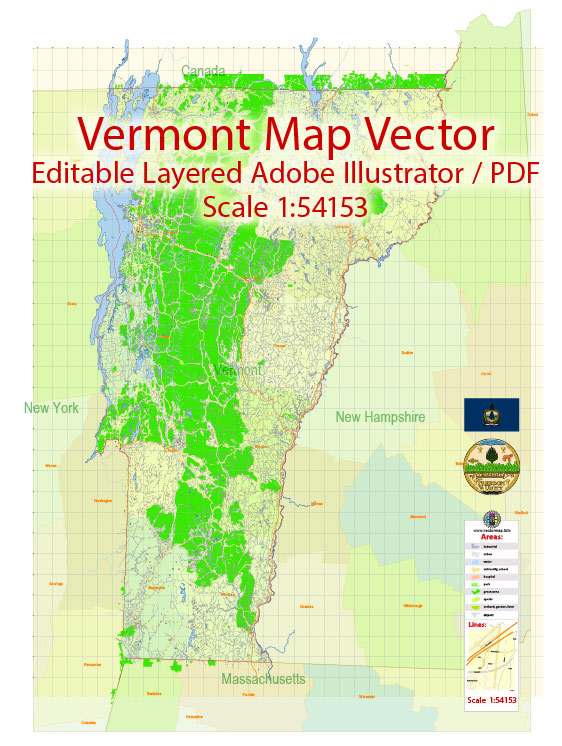Vermont, a state in the New England region of the United States, has a unique history of urban development that differs from more densely populated states. Vermont is known for its rural character, picturesque landscapes, and small-town charm. Here is an overview of key phases in Vermont’s history of urban development:
- Indigenous Peoples:
- Before European colonization, the region now known as Vermont was inhabited by various Indigenous peoples, including the Abenaki. They lived in harmony with the land, relying on hunting, fishing, and agriculture.
- European Settlement and Colonial Period (17th – 18th Centuries):
- European settlers, primarily of English and French origin, began arriving in the 17th century. The territory went through periods of conflicting claims and was eventually settled as part of the New Hampshire Grants.
- The establishment of towns, often centered around mills and agriculture, marked the beginning of Vermont’s urban development.
- American Revolution and Independence (Late 18th Century):
- Vermont declared its independence from New York and New Hampshire during the American Revolution. It existed as an independent republic for a short time before joining the United States in 1791 as the 14th state.
- Agriculture and Small-Town Development (19th Century):
- Throughout the 19th century, Vermont’s economy was primarily agrarian. Small towns and villages developed around farming communities, and industries such as logging and milling played a role in shaping local economies.
- Railroads and Industrialization (Late 19th – Early 20th Centuries):
- The late 19th century saw the introduction of railroads, connecting Vermont to broader markets and facilitating the transportation of goods. Industrialization, including the growth of granite and marble industries, had localized impacts on urban development.
- Tourism and the Rise of Resort Towns (Late 19th Century – 20th Century):
- In the late 19th century, Vermont began to attract tourists drawn to its scenic beauty. Resort towns like Stowe and Manchester emerged as destinations for outdoor recreation, contributing to Vermont’s economy.
- 20th Century and Urban Planning:
- Vermont’s urban development remained modest compared to more industrialized states. The state maintained its focus on agriculture, tourism, and small-town life.
- The mid-20th century saw efforts to preserve Vermont’s rural character, including the establishment of the Vermont Land Use and Development Law (Act 250) in 1970, which aimed to control and guide development.
- Counter-Culture Movement and Back-to-the-Land Movement (Late 20th Century):
- Vermont became a haven for the counter-culture movement in the 1960s and 1970s. The state attracted individuals seeking an alternative lifestyle and a return to the land, contributing to the state’s reputation for progressive values and environmental consciousness.
- Contemporary Trends and Sustainable Development:
- In recent decades, Vermont has seen a renewed emphasis on sustainable development and environmental conservation. Efforts to balance economic growth with preservation of the state’s natural beauty continue.
- Challenges and Opportunities:
- Vermont faces challenges such as demographic shifts, aging infrastructure, and the need for economic diversification. At the same time, the state embraces opportunities for innovation, small-scale entrepreneurship, and the promotion of Vermont as a destination for outdoor enthusiasts.
Vermont’s history of urban development is characterized by its commitment to preserving its rural character, fostering small-town communities, and embracing sustainable practices. The state’s unique blend of agriculture, tourism, and a commitment to environmental stewardship contributes to its distinctive identity within the United States.


 Author: Kirill Shrayber, Ph.D.
Author: Kirill Shrayber, Ph.D.